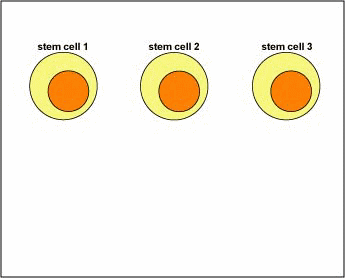
During its development, each B-lymphocyte becomes genetically programmed, through a process called gene translocation, to make a unique antibody molecule that will function as a B-cell receptor. Molecules of that antibody are then placed on the cell's surface where it can react with epitopes of an antigen. A B-lymphocyte with an appropriately fitting B-cell receptor can now react with epitopes of an antigen having a corresponding shape. This activates the B-lymphocyte. Cytokines from an activated T4-lymphocyte now enable the activated B-lymphocyte to proliferate into a large clone of identical B-lymphocytes. During this time, "fine-tuning" of the B-cell receptor occurs as a result of affinity maturation. The B-lymphocytes now differentiate into antibody-secreting B-lymphocytes and plasma cells that secrete large quantities of antibodies "fitting" the original epitope. Some B-lymphocytes differentiate into B-memory cells capable of anamnestic response.
GIF animation illustrating Clonal Selection and Clonal Expansion .swf by Gary E. Kaiser, Ph.D.
Professor of Microbiology,
The Community College of Baltimore County, Catonsville Campus
This work is licensed under a Creative Commons Attribution 4.0 International License.
Based on a work at https://cwoer.ccbcmd.edu/science/microbiology/index_gos.html.
Last updated: August, 2018
Please send comments and inquiries to Dr.
Gary Kaiser